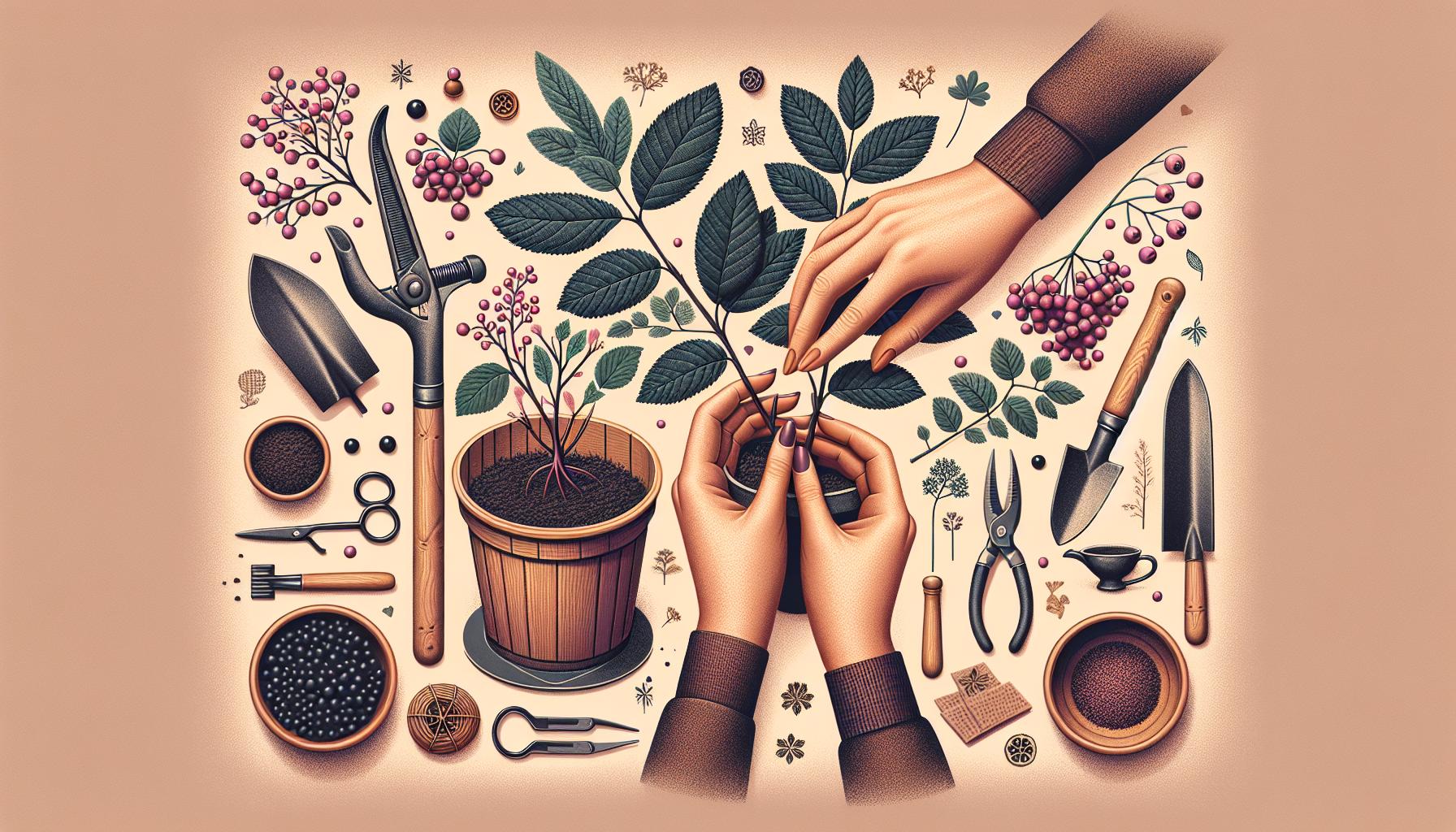
How do you transplant elderberry cuttings?
Plant up to three cuttings in each large pot by carefully inserting the angled end dusted with rooting hormone into the soil. Be sure to leave the top nodes located near the flat end of the cutting exposed as this is where the new elderberry plant will develop leaves.
Planting New Roots: The Art of Transplanting Elderberry Cuttings
Your quest to learn “How To Transplant Elderberry Cuttings” has landed you here, and we couldn’t be more excited to guide you through the process. Transplanting elderberry cuttings is an exercise in garden wizardry, turning small snippets of greenery into whole, flourishing elderberry bushes. With a blend of patience, watering, the right timing, and the right location, you can create an elderberry paradise right in your own yard. In this article, we’ll explore the nitty-gritty of this green-finger mystery and unravel how you can sprout success with elderberries.
A Cut Above: Selecting and Preparing Your Elderberry Cuttings
Handpicking the right elderberry cuttings to transplant can feel a bit like sorting out a fruit salad; it’s all about knowing what to look for. Reach out for healthy, vigorous stems of either the current year or last year’s growth, approximately 6 to 10 inches long. Once you’ve got your cuttings, treat them to a spa-like soak in a bucket of water immediately. This process, in essence, is the appetizer before the main course of planting.
The Magic of Healing: Curing Your Elderberry Cuttings
Now that your cutting hybrids are plunged into water, it’s time to let nature weave its curing spell. In about two weeks, your cuttings should present sprouting roots, signaling they’re ready to strut their stuff in the garden.
Land Ho: Preparing the Planting Site
Patience might be a virtue, but preparation is your ally in the gardening game. While your cuttings are busy sprouting roots, get your garden bed up to scratch. You may think ”any old dirt will do,” but elderberries have their own picky preferences when it comes to soil. Opt for a well-draining location with a pH between 5.5 and 6.5, and make sure the area receives plenty of sunshine.
Tickling the Earth: Planting Your Elderberry Cuttings
Once your elderberry cuttings have flashed their roots, it’s showtime! Plant your cutting saplings into the soil, digging a hole deep enough to comfortably accommodate the newly sprouted roots. Cover the roots with soil but be sure to keep the top part of the cutting above ground.
Cautious Caregiver: Tending to Your Elderberry Cuttings
The real gardening journey begins after planting. To give your elderberry cuttings the best shot at life, ensure they are watered regularly. Contrary to commonly held green thumb wisdom, elderberry cuttings are incredibly thirsty plants, especially in their formative stage.
Elderberry’s Surprise: Waiting for Your First Harvest
Nurturing elderberry cuttings is a hobby that will truly test your patience. Don’t expect a hearty harvest right off the bat. Elderberry bushes hit their stride in the third year, rewarding caregivers with a bountiful berry supply.
Conclusion: The Elderberry Promise
And there you have it! Transplanting elderberry cuttings might seem like a daunting task initially, but in reality, it’s a joyous journey of transformation. From a small cutting to a mighty bush, the metamorphosis is a joy to behold. Keep in mind, your cuttings won’t become fruit-bearing champions overnight, but with patience, plentiful water, and lots of love, the wait is indeed worth every elderberry.
Frequently Asked Questions
1. When should I take elderberry cuttings?
You can take elderberry cuttings during late winter when the bush is dormant.
2.Where should I plant my elderberry cuttings?
Choose well-draining soil in a sunny location, with a soil pH between 5.5 and 6.5.
3.How often should elderberry cuttings be watered?
Elderberries require regular watering, especially in their formative stage.
4.When will my elderberry cuttings start bearing fruit?
Generally, elderberry bushes start producing fruit in their third year.
5.Do elderberry cuttings benefit from any specific fertilizers?
An all-purpose garden fertilizer is usually sufficient for elderberries.


